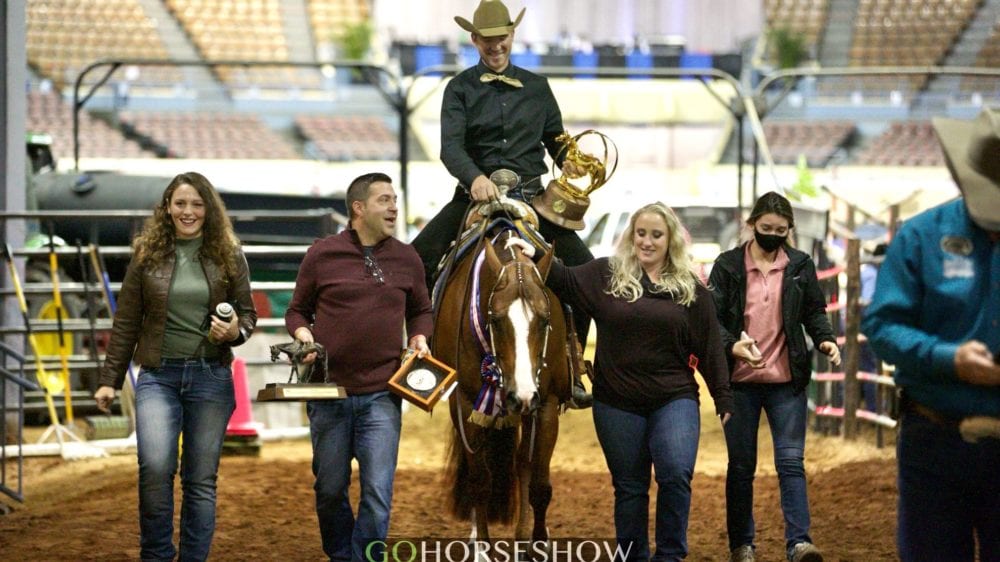Whether you are in or out of the show pen, effective communication is essential for a successful ride. We rely on our equine partners to understand our cues and, as riders, it is our responsibility to convey those cues as clearly as possible.
AQHA World Champion Colton LaSusa agrees, saying that effective communication between horse and rider is “everything we work towards.” Colton, who currently resides in Connecticut, specializes in trail and coaches his riders for all-around events.
It is evident that trail is his passion: “I like the pressure and having a lot more to break down as far as spots, movement, and the presentation of our horses.” This past year, LaSusa won the Senior Trail at the AQHA World Show.
GoHorseShow had the chance to speak with LaSusa regarding how he develops and solidifies effective communication with his horses.
Slowing it Down
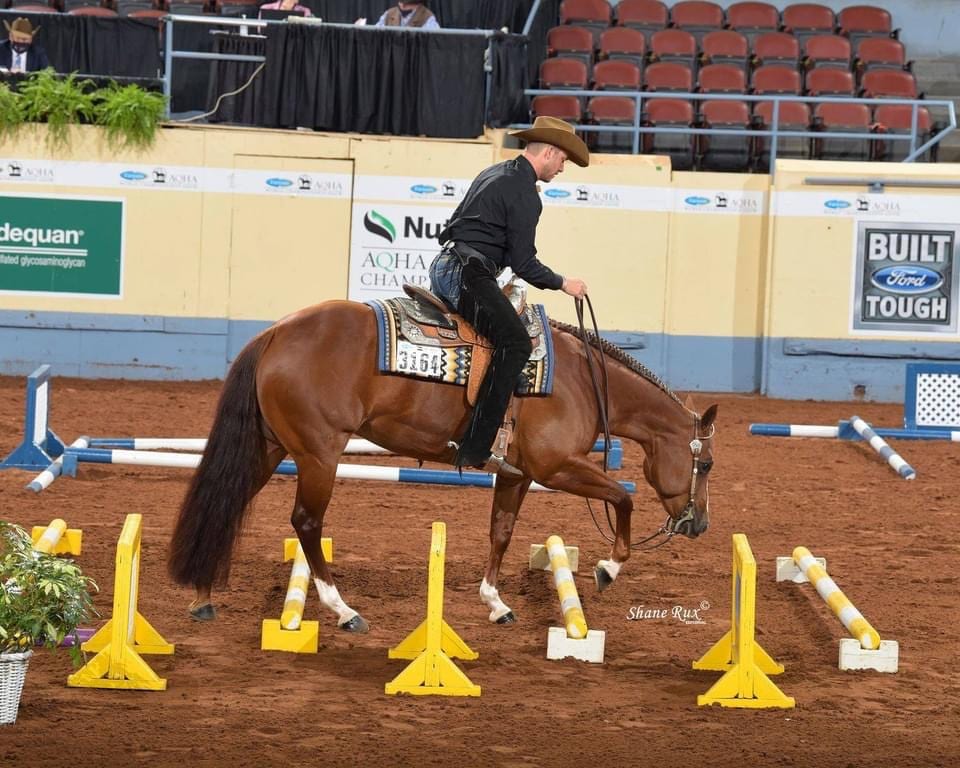 Colton stresses the importance of slow work and how spending time on more technical maneuvers builds confidence, not just for your horse, but also for you, as the rider. Slow work obstacles in trail are maneuvers such as the side-pass, the back-up, the box, and the walk-overs.
Colton stresses the importance of slow work and how spending time on more technical maneuvers builds confidence, not just for your horse, but also for you, as the rider. Slow work obstacles in trail are maneuvers such as the side-pass, the back-up, the box, and the walk-overs.
To effectively practice ‘slow work,’ one must break down each element individually, stopping and settling at each step. For example, while looking at the traditional and common ‘90° back up L’ obstacle, breaking down each piece of the back will set you up for success when you are expected to perform the maneuver in the show pen.
For LaSusa’s horses, who are accustomed to slow work, “they know that when I get in there, it’s back straight up, stop, address the hip, stop, move the shoulder, stop, back up.”
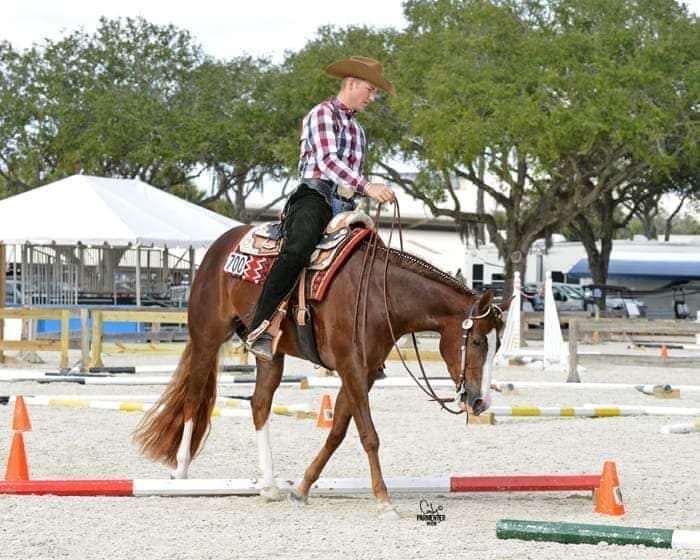 Colton says that for a class as technical as the trail, “it might only take a half a step for you to hit that pole,” so to combat this, our equine partners should be very responsive to our cues. For instance, if your horse’s cue to back-up is pressure from your spur, your horse should stop as soon as you take your feet out.
Colton says that for a class as technical as the trail, “it might only take a half a step for you to hit that pole,” so to combat this, our equine partners should be very responsive to our cues. For instance, if your horse’s cue to back-up is pressure from your spur, your horse should stop as soon as you take your feet out.
The longer you and your horse work on perfecting your slow work, the more you can begin blending it, adding some more style to the maneuver. However, Colton warns that blending your elements too much and too quickly is a common pitfall: “I don’t blend some of that slow work for a long time.” Furthermore, he says, “I don’t do it quickly because the quicker you do that, you’ll start to get a horse a little more anxious.”
Working step-by-step, breaking down each obstacle, and taking your time is a big piece of improving and maintaining effective communication.
Consistency
Consistency is vital for developing responsive and effective cues. LaSusa tells us, “There are a million ways to train a horse. Horses are super smart, and I think the biggest thing is that horses learn off of repetition. You have to be repetitive with what you do.”
 For instance, while working on transition work, your cue for a lope should be the same every time you ask for it. There is no need to overcomplicate a cue. Similar to us humans, your horse will better receive and understand your cue if it is simplified.
For instance, while working on transition work, your cue for a lope should be the same every time you ask for it. There is no need to overcomplicate a cue. Similar to us humans, your horse will better receive and understand your cue if it is simplified.
Changing up cues too often can be frustrating for both the horse and rider. Colton also advises that it does not matter what the cue itself is, as long as you are repetitive and consistent with your action plan.
Some familiar cues that LaSusa utilizes are:
- ‘Cluck’ for trot
- ‘Kiss’ to lope
- ‘Whoa’ to stop
- ‘tapping foot’ to create a more forward motion spin.
- ‘Holding foot and applying pressure’ to cue the horse to hold their haunches during a pivot.
- ‘Sliding foot back, and steadily applying pressure’ to cue the horse to hold their forehand during a turn.
It is important to note how each cue is distinct as well, since having distinctive cues can better help your horse understand the action you are conveying.
Practice, Practice, Practice
To get good at any skill, practice is a must. Colton shares a few tips to prevent your horse from rushing into transitions. He recommends two-tracking, which can help you in several ways.
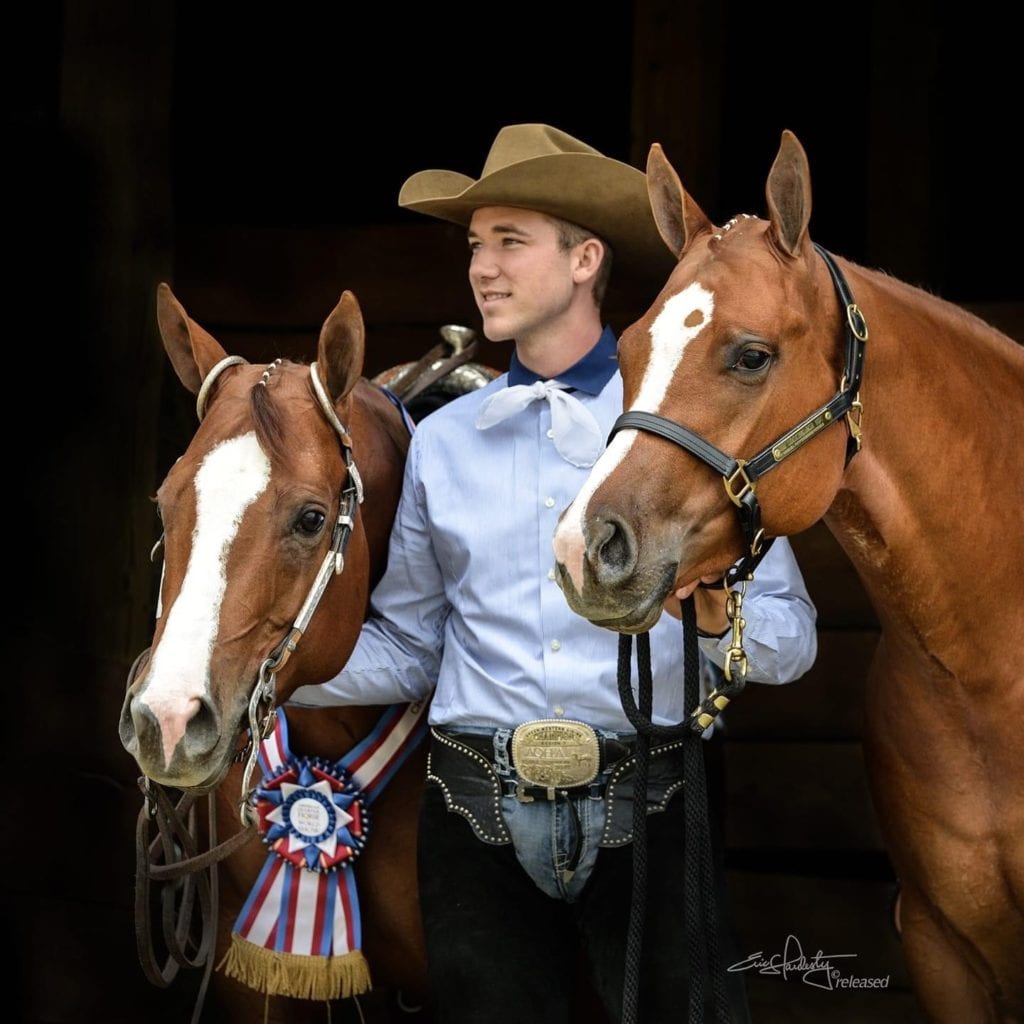 When you come off of an obstacle, practice holding and applying pressure with your outside leg, signaling a two-tracking motion, a movement where the horse moves simultaneously forward and to the side without moving its head or neck.
When you come off of an obstacle, practice holding and applying pressure with your outside leg, signaling a two-tracking motion, a movement where the horse moves simultaneously forward and to the side without moving its head or neck.
By engaging their hind end, two-tracking can help ensure that your horse is not only strong through their stifle and back, but it also provides that they can separate their back legs, both front to back and side to side.
After two-tracking, LaSusa tells us that “when I ‘kiss,’ we lope,” meaning that the horse responds to both his voice and his leg, but that the horse does not lope as soon as he engages his lower leg.
This allows Colton to first collect and gather his horse before his vocal cue, resulting in a smooth, connected, and gradual transition. He mentions that due to two-tracking, “When I come off of an obstacle, and I come to my outside leg, I don’t feel like my horse is as ‘wiggly.’”
When done correctly, incorporating this technique into your training will result in less anticipation for the lope-off transition, and your horse will be more responsive to your vocal and physical cues.
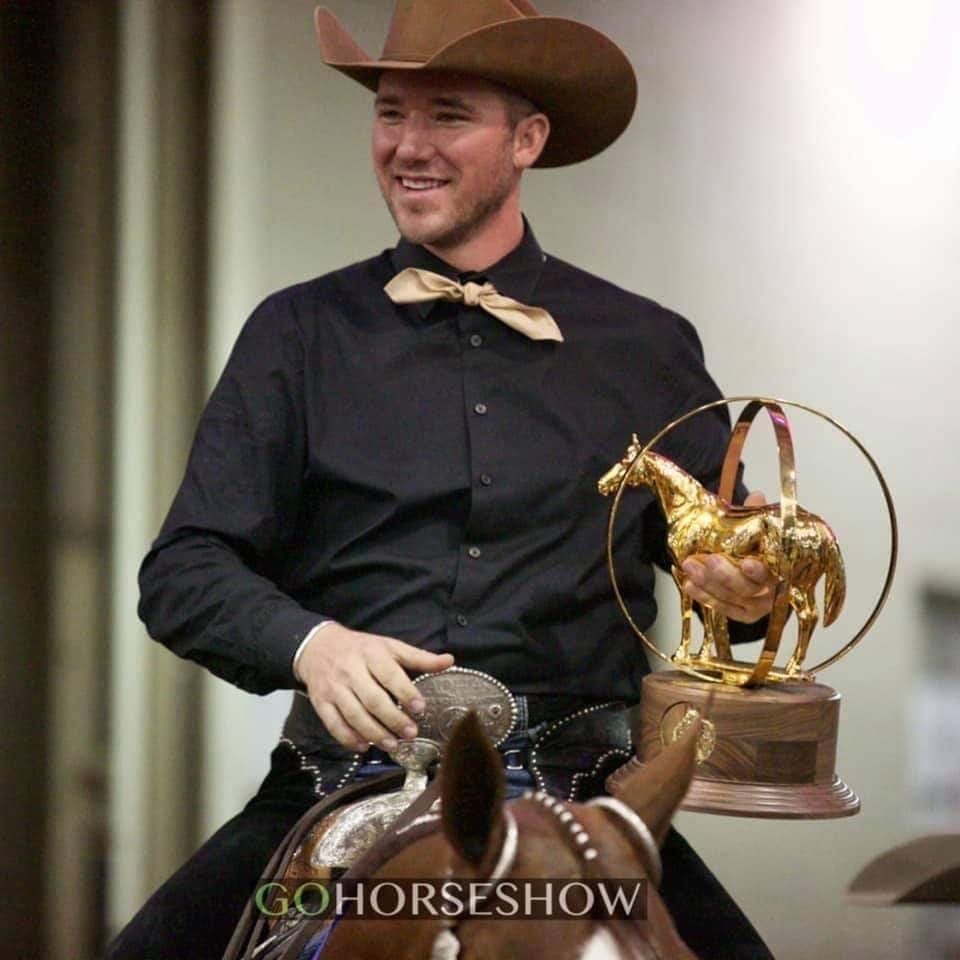 For transitions such as the extended lope, LaSusa suggests ways riders can improve that ‘button.’ He recommends not focusing on the extended lope itself, but instead on whether or not your horse understands precisely when you want them to extend, and when you want them to come back and slow down. It would help if you had that button solid, and then you can begin building on that, slowly adding speed.
For transitions such as the extended lope, LaSusa suggests ways riders can improve that ‘button.’ He recommends not focusing on the extended lope itself, but instead on whether or not your horse understands precisely when you want them to extend, and when you want them to come back and slow down. It would help if you had that button solid, and then you can begin building on that, slowly adding speed.
A cue to increase speed may be pressure from either a tapping or steady leg or riding a little more forward in your seat. A cue to ‘rate back’ or slowdown may be to release the pressure and sit deep into the saddle.
In Colton’s words, “After you have that button down, you can accelerate the next time, going a little faster, and then coming back a little quicker, because your horse now knows the difference between you riding a little more forward and coming back.”
Consistency, practice, and patience are three things that can help riders develop cues and communication with their horse. When practicing your transitions or trail obstacles, keep some of these tips in mind to be ready to tackle the patterns that come your way in the show pen.


